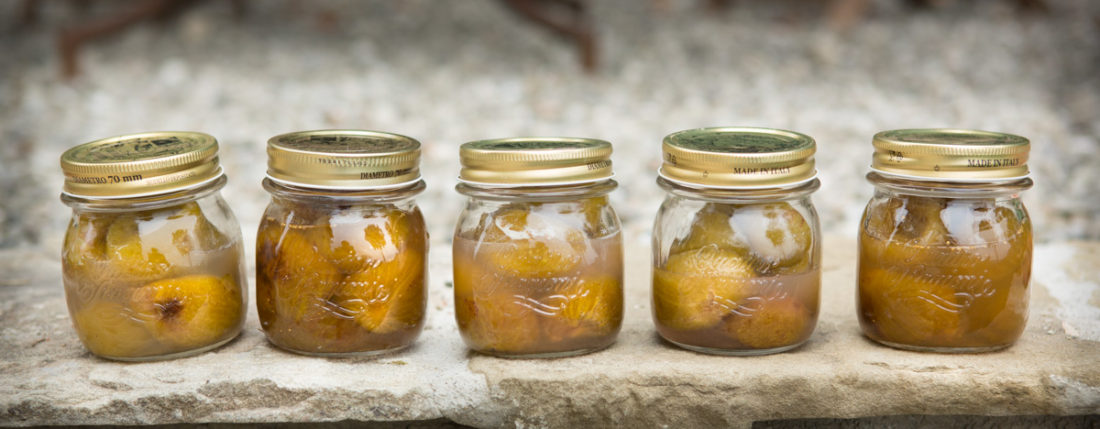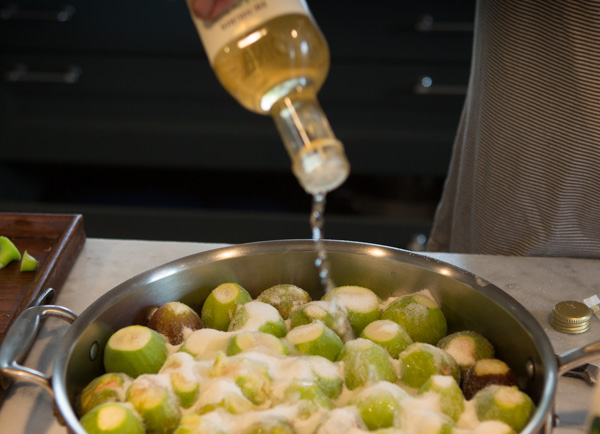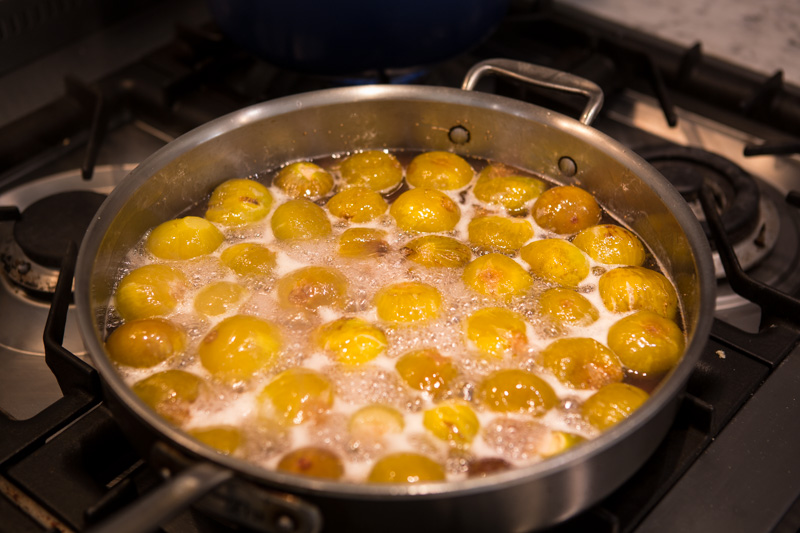
Easy figs to last through winter
Even on a tree, individual figs are only at their peak for a few days before going bad. Enter Franco. He’s the grandfather who you will meet in next week’s video who made gnocchi for us, along with his witty wife Anna. At the lunch that followed filming they served some preserved figs, along with pecorino cheese. The figs were sweet, but also complex, with just the right amount of a tart undertone. These weren’t like jam, but like the essence of fresh figs, preserved. Very simple, like the best of Tuscan food.
Franco offered to come over some morning when he wasn’t hunting to teach us how to make them.

I accepted the offer—Franco is the kind of cook I aspire to be. He never measures and hardly even looks at what he is doing because it is all so natural and familiar. And while he is cooking he is discussing everything from the power of the monasteries in the 13th-century to growing up as a tenant-farmer or the importance of constantly being exposed to new ideas.
Back to making the figs— get ones that taste great and are soft, but not overly ripe. Green or black figs work equally well. You will also need sugar, white wine vinegar, and small mason jars with lids. This recipe works well for small batches.
Cut the fig tops off and arrange in a heavy-bottomed pan so that they are in one layer. We used about 40 figs, which was 1.5 kilos (3.3 pounds) of figs. For this amount you pour over 400 grams (14 oz.) sugar and 60 ml (1/4 cup) of white wine vinegar.

Put over low heat. And wait. Franco occasionally pries the figs apart (either by slightly shaking the pan or gently using a blunt knife) so that the liquid that collects can coat all sides of them, but mainly leaves them undisturbed—no need to stir or flip them. After about 20-30 minutes, there will be a lot of liquid in the pan, and he spoons off the excess so that the bottom of the pan is well-covered but the figs aren’t drowning. And at this point, turn the figs so that all sides are well-coated. It amazed us that something as seemingly delicate as figs can withstand boiling like this, but they are a lot tougher than they look.
We normally boil mason jars, lids, and all implements, to sterilize but Franco’s technique is to run them through a hot dishwasher, fill the clean jars with the boiling contents, and then seal and flip them over to cool, thus ensuring that the boiling liquid reaches all parts of the inside of the jar. (For everything you need to know about recommended ways to sanitize and can, here’s a wonderful resource.)
Pack the figs in tightly, but don’t squish them, and add enough liquid to fill about a quarter of the jar.
These are delicious with cheese, and are also wonderful for breakfast with yogurt, or by themselves for dessert.
John experimented by adding one and a half inches of peeled and chopped fresh ginger to the cooking figs, which was a fantastic variation. The syrup takes on the ginger flavor, and the pieces become a soft ginger candy.
Next on the list to try before fig season is over is a modern take on a traditional Calabrian recipe—fig, vanilla, and orange blossom jam.
Another thing to serve alongside the figs is this fantastic caramelized red onion jam.






No Comments